Article by Rebecca Loyche in Berlin, Images by Jonathan Loyche; Monday, Mar. 24, 2014
New York City heralded the official start of the 2014 art season, as the Armory Arts Week’s 12 art fairs rose unscathed from the polar vortex hovering over most of the country. The red carpets were rolled out, the black town cars poised and there was a steady flow of traffic through the art stall aisles.
From an artist’s perspective, what do all these fairs have to offer? They clearly cater to the collector and represent what is selling or being ushered into the market. An artist could get downtrodden by witnessing firsthand the 1 percent chokehold that deems certain art worthy. One remedy is to consider all the fairs as an opportunity to do some research and some (perhaps off-putting) homework so that when it’s all over you’re happy you did it.
Below is a recap of some of the fairs.
The Armory Show was the main attraction, showing 205 exhibitors from 29 countries and occupying prime real estate on the cavernous piers 92 and 94 that jut out into the Hudson River. The atmosphere there was strictly professional, somewhat sterile, all commercial and the artwork so plentiful that it became overwhelming. The fair was visited by over 65,000 people in its 5-day run.
Part of the event’s buzz was fabricated entirely from its partnership with Artsy, an online platform for learning how to collect art. Artsy was everywhere at the fair and even had digital display columns that constantly updated the fair-goers about what artists and artworks were most popular at the fair that minute. Artsy’s persistent updates bordered on what other platforms like sellyoulater.com obtain from turning art’s value into mere statistics. These systems perpetuate an art market controlled by a select few, like a no-value stock being turned into gold.
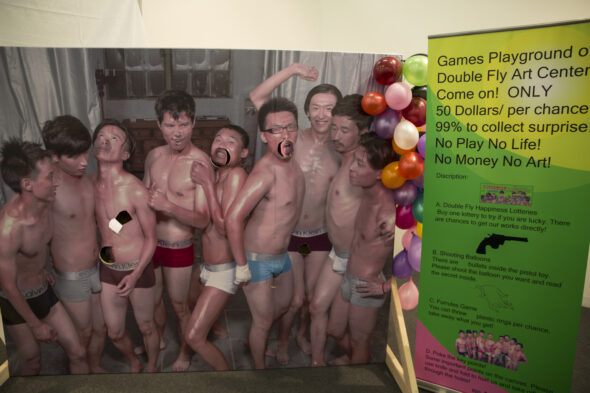 Probably the strangest but most entertaining exhibitor at the Armory was the Double Fly Art Center, a collective of nine male Chinese artists. The Space Center booth was turned into carnival games called “Games Playground” where $50 gave you a chance at winning art at dart throwing and punching holes into the poster of the above exhibiting artists all wearing Calvin Klein undies.
Probably the strangest but most entertaining exhibitor at the Armory was the Double Fly Art Center, a collective of nine male Chinese artists. The Space Center booth was turned into carnival games called “Games Playground” where $50 gave you a chance at winning art at dart throwing and punching holes into the poster of the above exhibiting artists all wearing Calvin Klein undies.
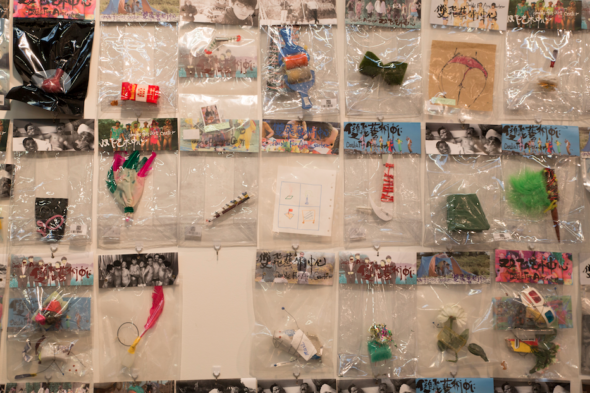 A closer look at the prizes to be won from the Space Center booth, Double Fly Art Center is a nine member Chinese art collective based in Beijing.
A closer look at the prizes to be won from the Space Center booth, Double Fly Art Center is a nine member Chinese art collective based in Beijing.
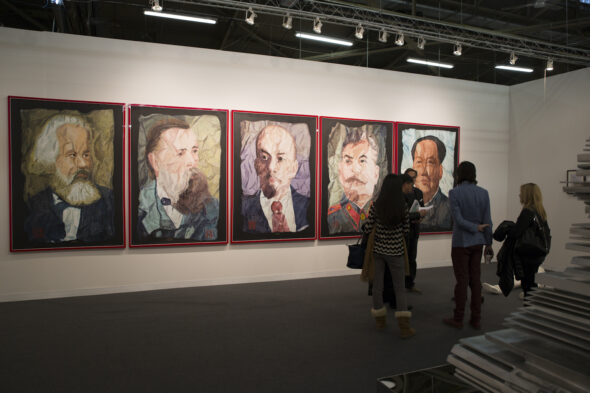 The Tianrenheyi Art Center from Hangzhou, China had the most political presentation
The Tianrenheyi Art Center from Hangzhou, China had the most political presentation
tilted “Unrestricted Warfare” within the Focus on Chinese Art at the Armory. Jin Feng’s “Socialist Leaders: From Marx to Mao,” consisted of crumpled stock portraits of revolutionary heroes to symbolize a longing for the future by tarnishing the past.
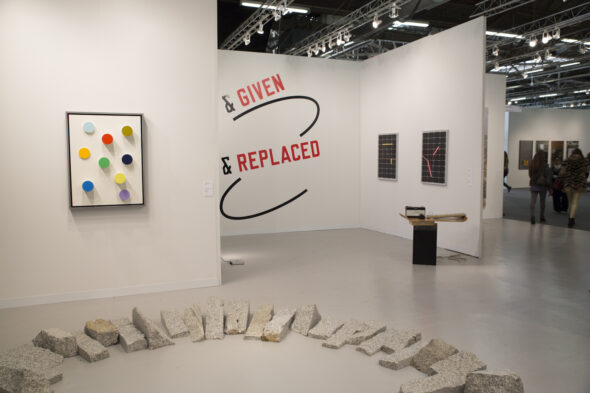 Lisson Gallery showing Haroon Mirza, Richard Long, and Dan Graham.
Lisson Gallery showing Haroon Mirza, Richard Long, and Dan Graham.
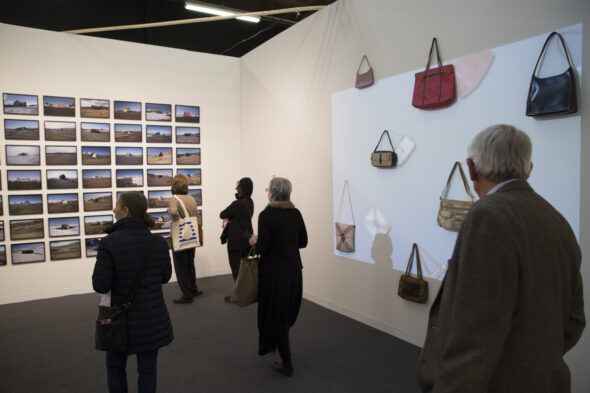 The only Icelandic gallery was i8, which showcased the works of Berlin-based artists Olafur Elíasson and Egill Sæbjörnsson.
The only Icelandic gallery was i8, which showcased the works of Berlin-based artists Olafur Elíasson and Egill Sæbjörnsson.
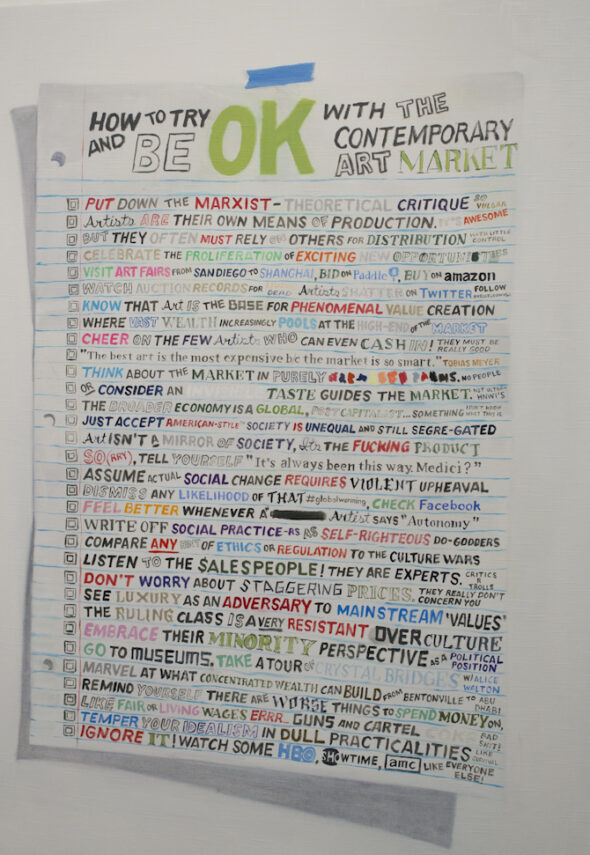 The ever-funny William Powhida at Postmasters
The ever-funny William Powhida at Postmasters
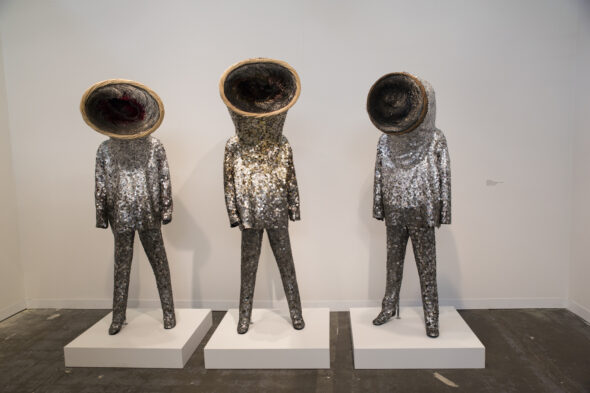 Nick Cave at Jack Shainman gallery- this was the most popular photographed work.
Nick Cave at Jack Shainman gallery- this was the most popular photographed work.
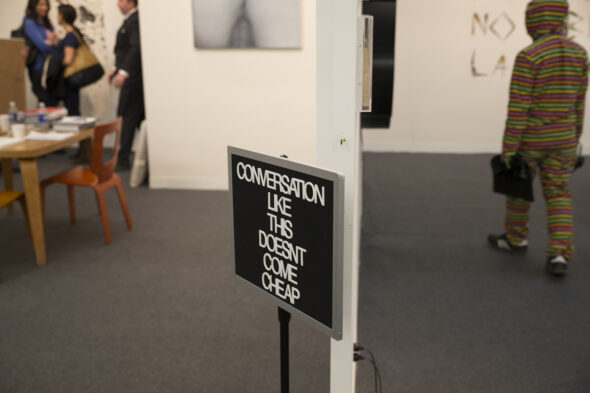 At Gavlak Gallery – no kidding.
At Gavlak Gallery – no kidding.
___________________________________________________________________________________
After the Armory came the Art Dealers Association of America (ADAA) Art Show held in the spectacular Park Avenue Armory on the Upper East Side of Manhattan. The neighborhood already screams money and the exclusiveness of the fair’s name even forewarns it but this fair really did an outstanding job of presenting artwork in an exquisite, respectful and close to museum-like setting. With only seventy-two galleries presenting, it was easier to actually see, experience and remember the artwork. The ADAA even goes as far as donating their steep entry fee of $25 to benefit a not-for-profit social service agency, The Henry Street Settlement.
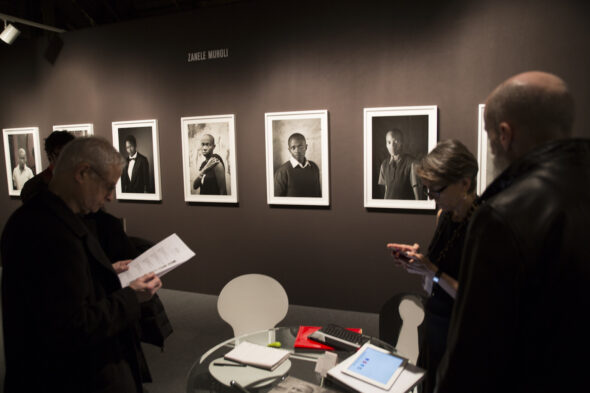 At Yancey Richardson Gallery the South African artist Zanele Muholi’s Faces and Phases,portraits of black lesbians and transgenders living in South Africa.
At Yancey Richardson Gallery the South African artist Zanele Muholi’s Faces and Phases,portraits of black lesbians and transgenders living in South Africa.
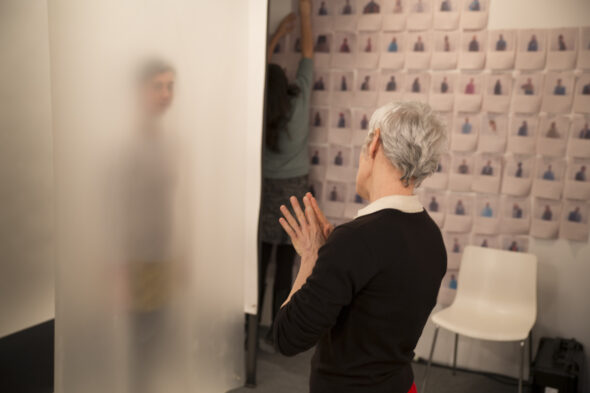 Carl Solway Gallery had a crowd formed around its booth for the artist Ann Hamilton who was in residence for the fair’s duration. Hamilton made portraits of individual fair goers pressed against a sheet of Duraflex® membrane.
Carl Solway Gallery had a crowd formed around its booth for the artist Ann Hamilton who was in residence for the fair’s duration. Hamilton made portraits of individual fair goers pressed against a sheet of Duraflex® membrane.
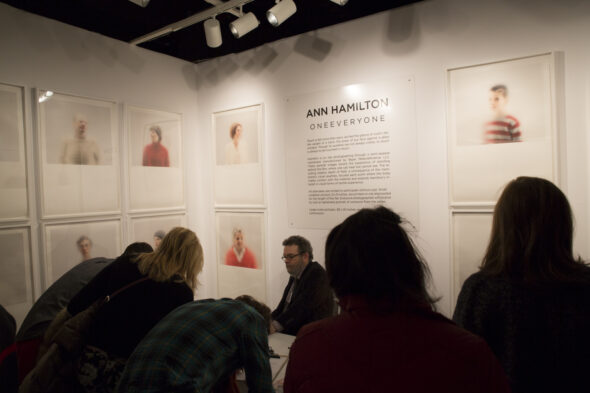
Hamilton is no stranger to the Park Avenue Armory after her highly praised interactive swing and silks installation there last year tilted The Event of a Thread.
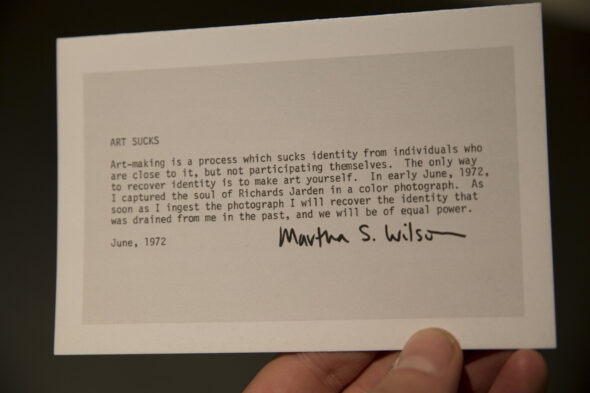 P.P.O.W has an incredible solo booth devoted to the unknown works from the early 70’s of Martha Wilson. Wilson’s work should be better known by now and P.P.O.W succeeds in changing that.
P.P.O.W has an incredible solo booth devoted to the unknown works from the early 70’s of Martha Wilson. Wilson’s work should be better known by now and P.P.O.W succeeds in changing that.
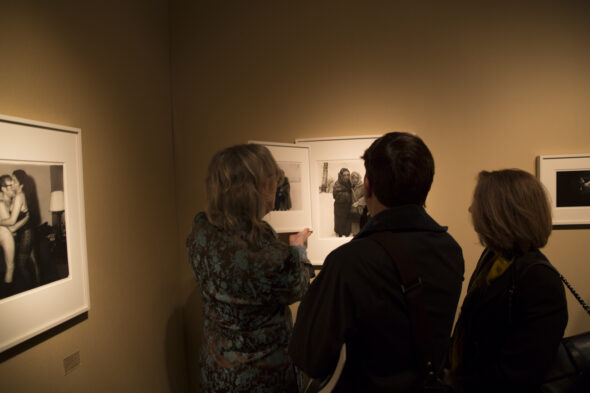 Fraenkel Gallery exhibits Diane Arbus’s Couples.
Fraenkel Gallery exhibits Diane Arbus’s Couples.
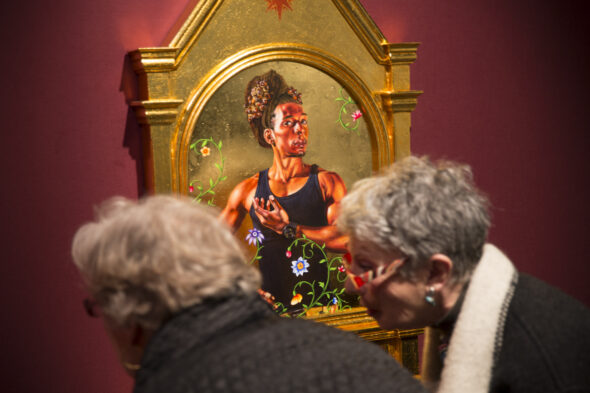 Sean Kelly Gallery presented New York based artist Kehinde Wiley.
Sean Kelly Gallery presented New York based artist Kehinde Wiley.
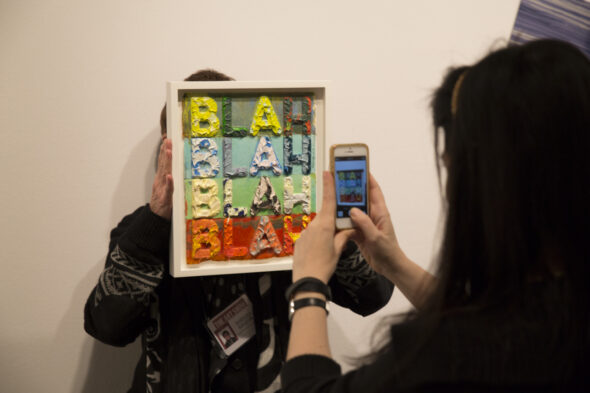 This unique mono print by Mel Bochner at Barbara Krakow Gallery was very desirable. We stood around for ten minutes to observe 5 people inquiry about purchasing. Who knew that Blah, Blah sold these days…
This unique mono print by Mel Bochner at Barbara Krakow Gallery was very desirable. We stood around for ten minutes to observe 5 people inquiry about purchasing. Who knew that Blah, Blah sold these days…
___________________________________________________________________________________
Next up was Scope – the 14th edition which welcomed over 18,000 visitors (including 4000 VIPs). It has been compared to an “art mall” and it felt that way a bit as there was a sense that the exhibitors were haphazardly placed. The fair did expose a lot of up and coming galleries, which they highlighted in the unfortunately named “Breeder Program”. We spoke to a gallery collective that doesn’t have an actual physical gallery space anymore except for when they bring their artists to art fairs. This touched on a new topic of recent conversation, that perhaps art fairs are replacing the need for galleries. With a hefty entrance fee this does make the point that art at art fairs is not for everyone, only those that can pay for access or have connections.
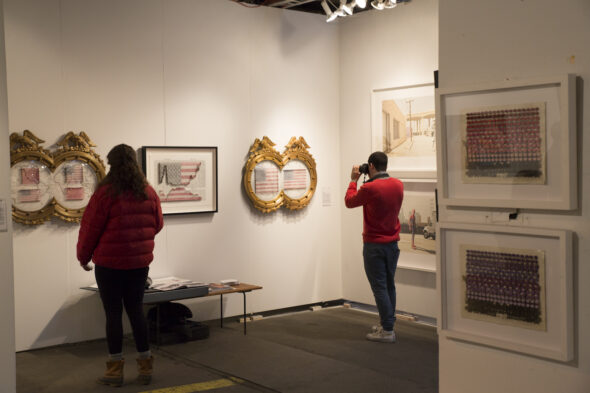
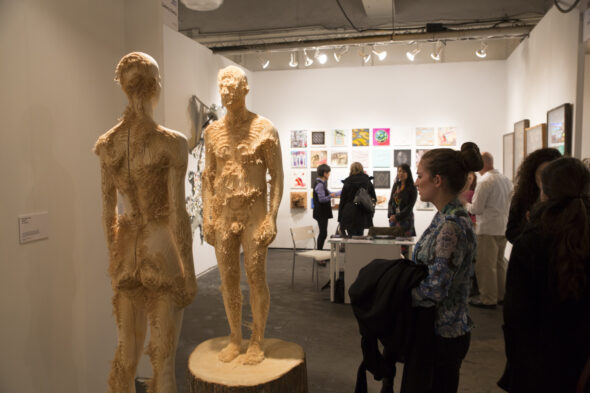 Aron Demetz from Galleria Ghetta, Ortisei
Aron Demetz from Galleria Ghetta, Ortisei
___________________________________________________________________________________
A fair that just started to charge entrance this year was the Independent Art Fair held in a trendy section of Chelsea. The former Dia Art Foundation’s space was vast, clean, slick, and very much like the rest of the awesome spaces inhabiting Chelsea’s art turf. There were more than 50 galleries from all over the world, with new additions including OKO, the East Village storefront outpost of Luxembourg & Dayan, Mari Spirito’s nonprofit ProtoCinema, the Lower East Side gallery Ramiken Crucible and Karma bookstore. In contrast to the other fairs, it was a breath of fresh air with ample space to look at the art and it also gave credence to the point that white-walled galleries make art look good. Unfortunately, the overall impression was one of an over-designed fair, with very little “independent” voices within the glib façade. A lot of the work seemed art fair-induced.
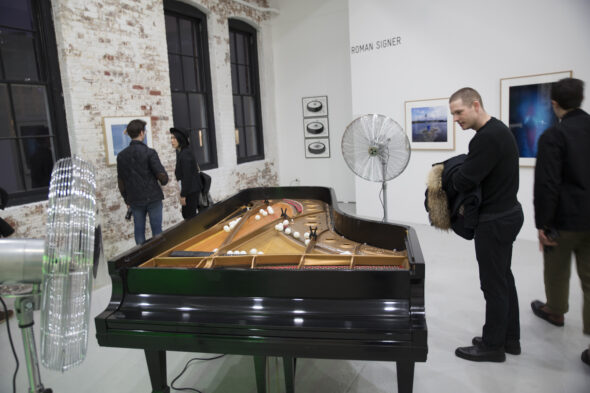 Art:Concept showed Roman Signer’s Piano with ping-pongs blowing in the fan breeze.
Art:Concept showed Roman Signer’s Piano with ping-pongs blowing in the fan breeze.
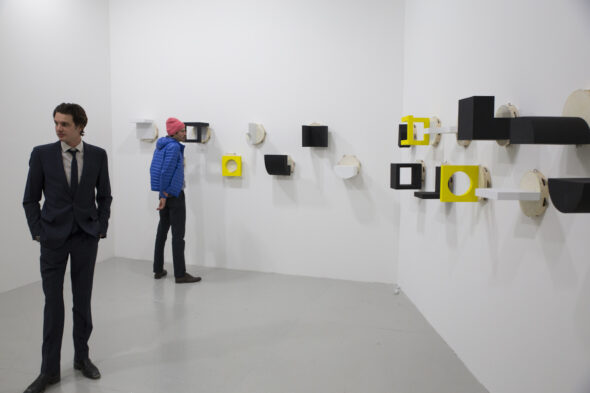 New York based Maccarone’s display entitled Modern Art
New York based Maccarone’s display entitled Modern Art
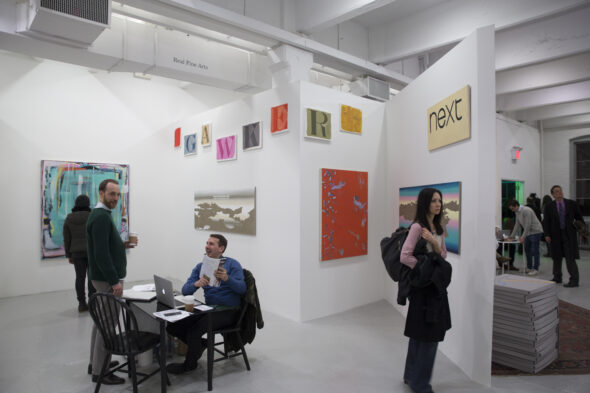 Brooklyn Gallery Real Fine Arts
Brooklyn Gallery Real Fine Arts
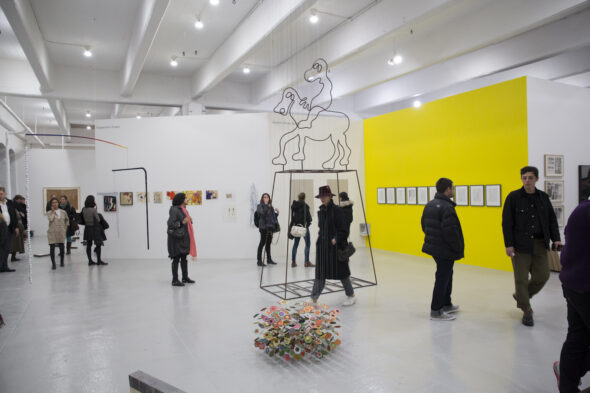 Exhibition view from Independent Art Fair
Exhibition view from Independent Art Fair
___________________________________________________________________________________
As adverse as the neighborhood it inhabited, The (Un)Fair in Hell’s Kitchen was a non-gallery based fair. The space was somewhat raw, old school and charming. The elevator ride took us to the basement where the doors opened onto a brick wall with a sign taped to it that said “please wait to go up.” The feeling of (Un)fair was of a large group exhibition where there was much consideration in the placement of the artworks. At times it looked like student work but all the art was presented and hung extremely professionally, evidence of self-represented working artists who didn’t have the support of galleries but were perhaps art handlers themselves.
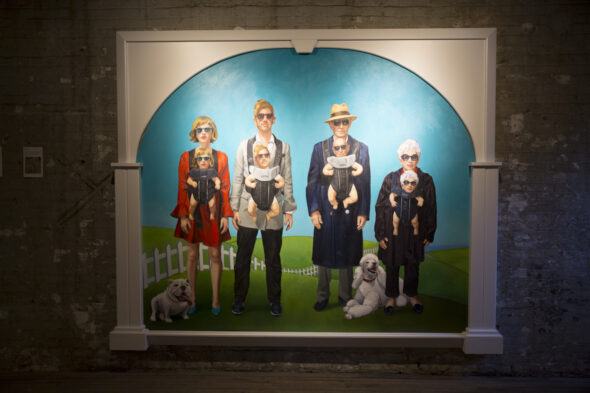 Zezziou’s Bjorn Identity painting
Zezziou’s Bjorn Identity painting
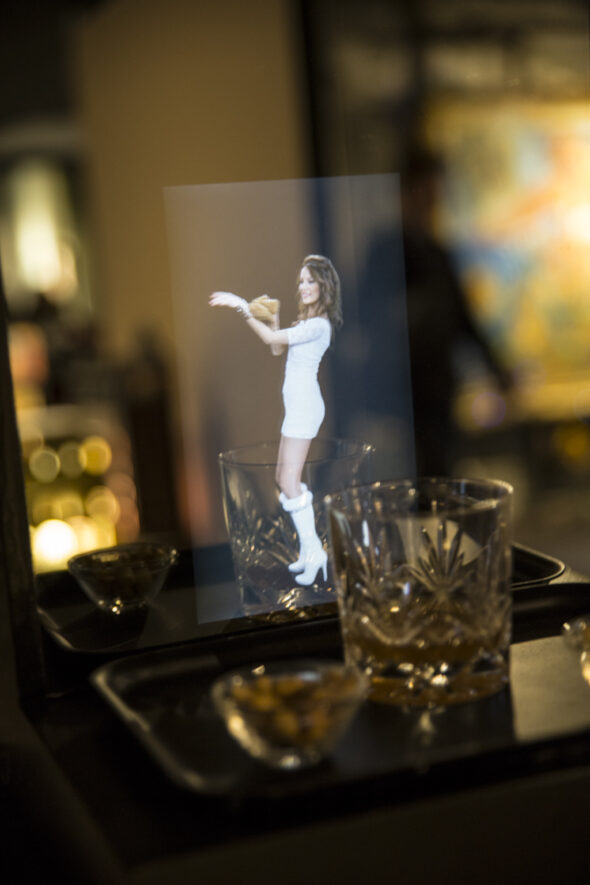 Pierrick Sorin’s mixed media piece Poor Lui
Pierrick Sorin’s mixed media piece Poor Lui
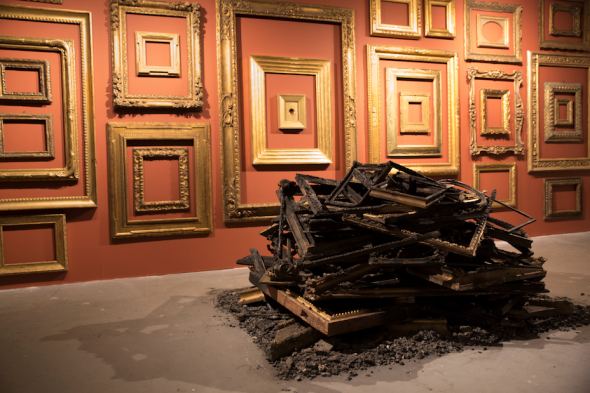 Gill & Lagodich, Gilded Frame Burn Pile and Salon Wall
Gill & Lagodich, Gilded Frame Burn Pile and Salon Wall
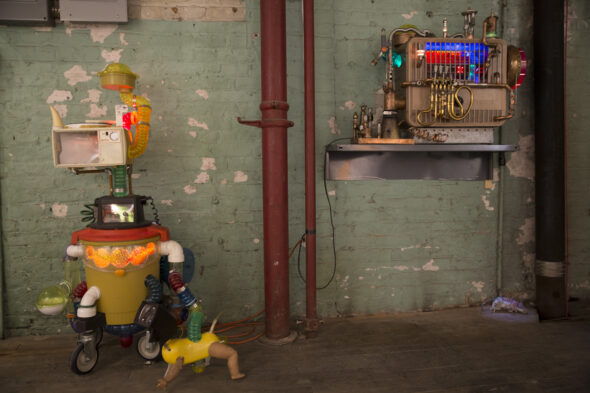 Baltzerglass- Art Jird, Gerbils and mixed media
Baltzerglass- Art Jird, Gerbils and mixed media
___________________________________________________________________________________
The Moving Image Art Fair was again in the amazing Waterfront New York Tunnel and at first glance looked quite exciting and ambitious. The long tunnel hall had hanging screens, flat screens on the floor, and individual monitors hanging from heavy grade lighting trusts to create viewing stations. The artworks were from 35 artists represented by galleries and non-profit institutions from around the world. There were a couple gems: AV-arkki, the distribution centre for Finnish media art, brought 3 intriguing women video makers. Particularly noteworthy was Milja Viita’s Coriolis piece about identical twins living world’s apart in Helsinki and Togo. Patty Chang, Nam June Paik and the very popular Oded Hirsch were there to strengthen the presentation. Unfortunately, the setup cancelled out the works in a way, because there was no secluded space to actually focus on the work. The audio did not work for much of the artworks and the abrupt prompts of media restarting itself were very distracting for a moving image show.
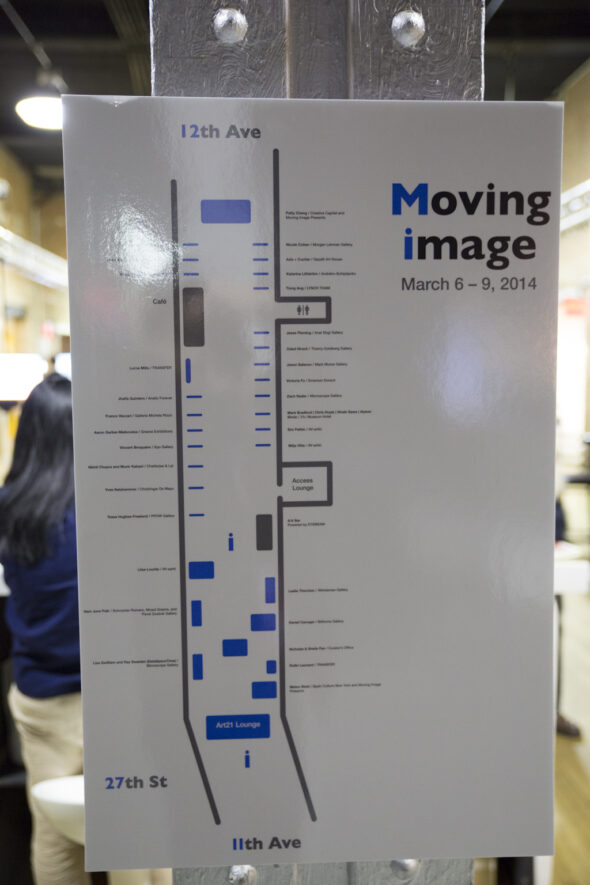
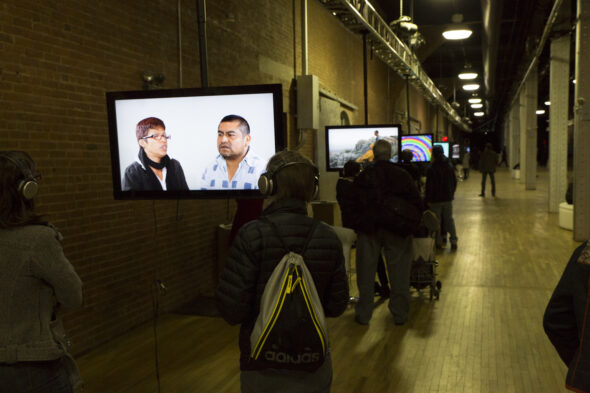
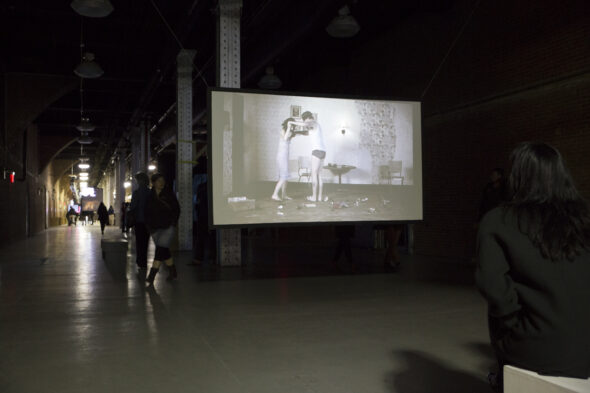 The work of Nicholas and Sheila Pye, courtesy of the intriguing “office/micro-gallery space” project called Curator’s Office
The work of Nicholas and Sheila Pye, courtesy of the intriguing “office/micro-gallery space” project called Curator’s Office
Overall, the art market is still doing extremely well (surprise, surprise) with the latest reports stating that 2014 is off to a bullish start to potentially become the most prosperous year since the boom of 2007. In addition, the US still dominates the art market, this is quite apparent after spending a couple days among the fray of commerce during NYC’s art fair week.
___________________________________________________________________________________



















